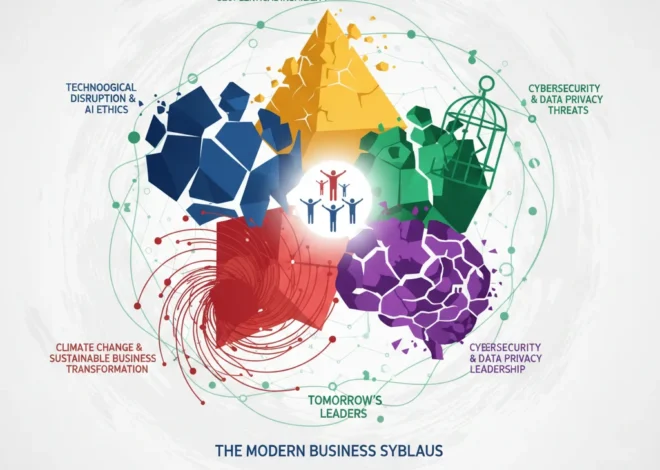
Beyond the Bezel: Why Dubai’s Watch Market is a Ticking Indicator for the Global Economy
The Shifting Sands of Time: A New Epicenter for Luxury
In the world of high finance and elite investing, certain events act as bellwethers, signaling subtle but significant shifts in the global economic landscape. While many analysts keep their eyes glued to stock market tickers and commodity prices, a powerful indicator is emerging from an unexpected quarter: the world of haute horlogerie. The recent, explosive growth of Dubai Watch Week is more than just a gathering of enthusiasts; it’s a profound statement on the changing geography of wealth, the evolution of alternative assets, and the future of the luxury economy.
The emirate’s premier watch event has impressively doubled in size since its last iteration, a stark contrast to the waning influence of some traditional European watch fairs. This isn’t a random occurrence. It’s the result of a calculated strategy by both the organizers and the world’s most prestigious watchmakers, who recognize that the center of gravity for luxury consumption and investment is migrating. As capital flows eastward, so too does the attention of an industry built on precision, heritage, and exclusivity. Understanding this phenomenon is crucial for anyone involved in finance, investing, or international business, as the ticking of a Swiss movement in the Dubai desert echoes trends that will shape the market for years to come.
From Timepiece to Tangible Asset: The Investment Mechanics of Horology
For the uninitiated, a six-figure price tag on a watch may seem like pure indulgence. For the savvy investor, however, it represents a strategic allocation of capital into a tangible, alternative asset class. Unlike stocks or bonds, luxury watches are Veblen goods—items for which demand increases as the price rises, due to their exclusive and aspirational nature. This unique economic principle insulates them, to a degree, from conventional market volatility.
The secondary market for high-end timepieces is a vibrant ecosystem of its own, with auction houses, specialist dealers, and digital trading platforms facilitating billions in transactions. The performance of certain models from brands like Rolex, Patek Philippe, and Audemars Piguet has, at times, outpaced traditional stock market indices. This is not merely about speculation; it’s about investing in craftsmanship, rarity, and brand equity that has been cultivated over centuries. The rise of Dubai as a hub for this market is significant because it provides a regulated, secure, and accessible environment for a new generation of collectors and investors from the Middle East, India, and Asia to participate in this lucrative trading.
To put this in perspective, let’s consider the key drivers of a watch’s investment value compared to a traditional stock.
| Factor | Luxury Watch (e.g., Patek Philippe Nautilus) | Blue-Chip Stock (e.g., Apple Inc.) |
|---|---|---|
| Primary Value Driver | Rarity, brand heritage, provenance, condition, and desirability. | Company earnings, revenue growth, market share, and economic outlook. |
| Volatility | Generally lower volatility, but can be susceptible to trends in collecting and long-term economic cycles. Less liquid. | Subject to daily market fluctuations, geopolitical events, and short-term news cycles. Highly liquid. |
| Asset Type | Tangible, physical asset with intrinsic value in its materials and craftsmanship. | Intangible financial asset representing ownership in a corporation. |
| Market Influences | Auction results, collector sentiment, new model releases, celebrity endorsement. | Interest rates, inflation, industry competition, regulatory changes. |
As this table illustrates, investing in horology requires a different mindset than traditional stock trading. It’s a long-term play on cultural significance and scarcity, making events like Dubai Watch Week critical venues for market intelligence and sentiment analysis.
The Great Creditor Clash: Inside the Billion-Dollar Courtroom Battle Tearing Wall Street Apart
The Dubai Nexus: Where Global Economics and Brand Strategy Converge
Why Dubai? The answer lies at the intersection of geography, demographics, and forward-thinking economic policy. The UAE has positioned itself as a global hub for finance and commerce, a stable and luxurious nexus between East and West. The region’s high concentration of high-net-worth individuals provides a ready-made market for luxury goods. But the strategy is more sophisticated than simply following the money.
Dubai offers a platform for brands to engage directly with a diverse, international clientele that is younger and more digitally native than the traditional European customer base. This is where brand strategy becomes intertwined with regional economics. Brands are not just selling watches in Dubai; they are gathering data, testing new retail concepts, and building relationships in a market that will drive global growth for the next decade. The success of Dubai Watch Week injects significant capital into the local economy through tourism, hospitality, and retail, further cementing its status as a global luxury capital. For the Swiss watch industry, which exports billions of dollars in timepieces annually, nurturing this regional market is no longer optional—it is essential for future prosperity.
Fintech and Blockchain: The New Guardians of an Old Craft
While watchmaking is steeped in tradition, its future as an investment class is being secured by cutting-edge financial technology. The challenges of the secondary market—counterfeiting and a lack of transparent provenance—have long been a drag on investor confidence. This is where fintech and blockchain are becoming game-changers.
Several forward-thinking brands and tech startups are now using blockchain to create immutable digital passports for their timepieces. Every service, sale, and transfer of ownership can be recorded on a distributed ledger, providing an unforgeable history that verifies authenticity and protects value. This application of blockchain technology is a perfect example of how financial technology can build trust and efficiency in a market built on heritage.
Furthermore, fintech platforms are emerging that allow for fractional ownership of ultra-rare “grail” watches. This democratizes access, allowing smaller investors to gain exposure to this asset class without the need for millions in capital. This innovation lowers the barrier to entry, potentially expanding the market and increasing liquidity. This fusion of centuries-old craftsmanship with modern financial technology is what makes the current moment so exciting, transforming watch collecting from a hobby into a sophisticated component of a diversified investment portfolio.
Beyond the Banks: Is the Entire Financial Sector Due for a Windfall Tax?
Key Signals for Investors and Business Leaders
The developments showcased at Dubai Watch Week offer several actionable insights for professionals in finance and business. This isn’t just about the mechanics of a watch; it’s about the mechanics of a changing world.
Here are the key takeaways:
| Signal | Implication for Investors & Business Leaders |
|---|---|
| Growing Prominence of Regional Hubs | Global business strategy must shift from a centralized model to a decentralized, regional focus. Monitor emerging wealth centers as leading indicators of consumer trends. |
| Luxury Goods as Economic Barometers | The health of the high-end luxury market can be a forward-looking indicator of discretionary spending and investor sentiment among the world’s wealthiest individuals. |
| Integration of Tech in Traditional Assets | Look for investment opportunities where technology (like blockchain) is being used to solve legacy problems (like authentication and liquidity) in tangible asset classes. |
| The Power of Experiential Retail | The success of an immersive event like Dubai Watch Week highlights that modern consumers, even at the highest end, crave experiences and community, not just transactions. |
Brands that successfully navigate this new landscape, like the independent watchmakers who have found a powerful voice in Dubai, demonstrate agility and a deep understanding of their new customer base. There are powerful lessons here for any business leader looking to thrive in a globalized economy.
The Incentive Engine: Why Some Economies Soar While Others Stagnate
Conclusion: Reading the Time on the Global Economy
Dubai Watch Week is far more than a dazzling display of mechanical artistry. It is a real-time case study in the migration of economic power, the maturation of alternative investments, and the collision of heritage with financial technology. The fact that the world’s most conservative and traditional industry is now dialing into Dubai to regain impetus speaks volumes. For investors, finance professionals, and business leaders, the message is clear: to understand where the global economy is heading, you need to do more than watch the stock market. You need to watch the watches.


